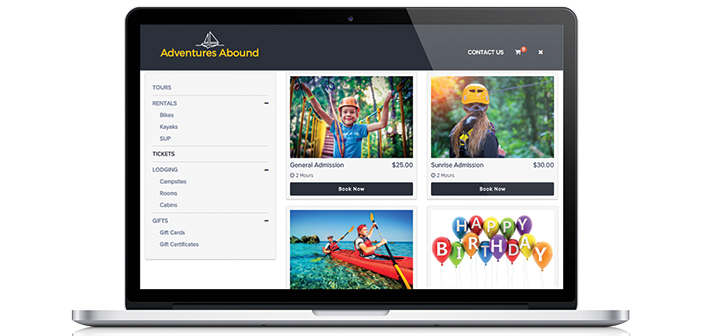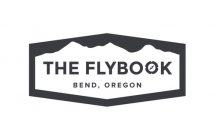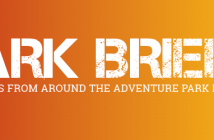Booking software is a topic that should never be far from the mind of the average adventure park operator. And how could it be? You and your team interact with it every day. It can help keep the park humming or grind it to a halt.
So you probably know that this industry has evolved significantly over the past year or two, and will continue to do so. New booking software solutions have arrived and others have departed. One example: Zozi, an exhibitor at the 2017 ACCT Conference, was sold to Peek. And that’s just the start of it.
In this two-part series, we will cover the trends, the new features, and the players you need to keep an eye on. In Part 1, we’ll take a look at the rapid evolution of the state of the industry. In Part 2, coming in the winter issue of Adventure Park Insider, we’ll look at the newer players on the block and some new features coming from the more experienced hands.
As the founder of a company that builds websites for tour operators—websites that must co-exist peacefully alongside many of the major booking softwares—I have been fascinated to watch the changes happening. The flop of the much-hyped third-party channels and the victory for direct sales has been a surprise, and a positive one for operators. There has been a rapid increase in software tools and solutions for both small and large operators, and in fee structures.
We’ll take a look at the details in the second part of this series. But first, here’s the big picture.
Viator, Expedia, and Friends Land With a Whimper
Wind back the clock 18 months, and integration of tour and activity sites with third-party distributors like Expedia and Viator was the hot topic in the wider tourism world. Yet, the expected flood of sales through these channels turned out to be more like a trickle.
Stephen Joyce, from Rezgo, explains: “There’s a lot of sites trying to become the next Viator or next Expedia for tours and activities, but they’re very few and far between, and are not generating significant revenue. We see two to three percent of revenue on average comes from these companies.”
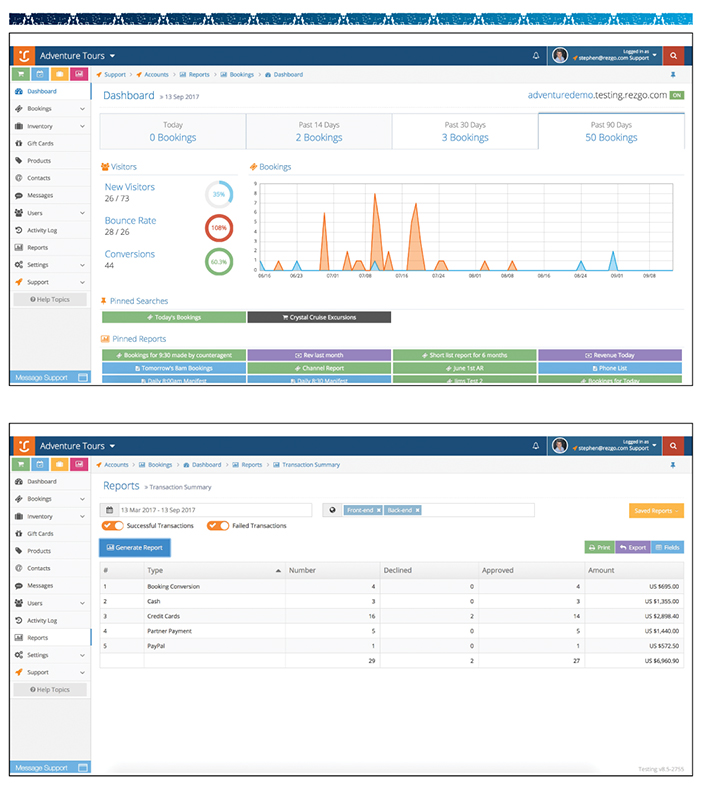
Top: Rezgo’s booking software includes a dashboard that displays sales trends and basic analytics. Above: Another tool Rezgo offers is a transaction summary report that shows how much is collected through each payment type.
Grant Jurgeneit, of Checkfront, agrees that these channels have not met expectations, but adds, “Especially if customers have a large inventory, having this distribution is a critical facet for them—it can help companies move extra inventory in non-peak times.”
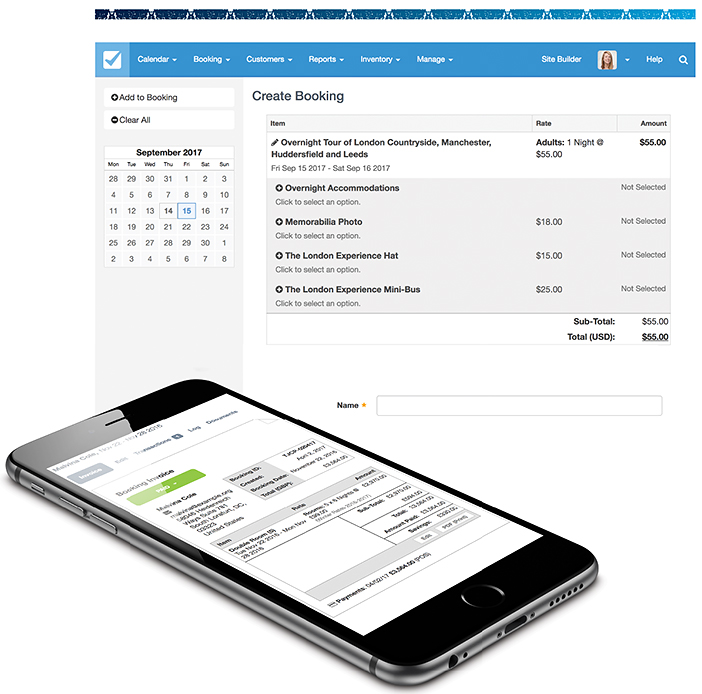
Top: For operations that have a more complicated mix of products, including overnight lodging options, Checkfront is one of a handful of softwares focused on integrating multiple facets of a business. Above: After a customer books online, Checkfront automatically sends a “mobile invoice” to the purchaser.
It’s Time to Focus On Direct Sales Channels
If the experience of the accommodation sector is any guide, the disappointing outcomes from Viator and Expedia should be celebrated, not lamented. Many hotels lost control of their distribution to third-party channels, and are now engaged in a daily battle trying to point customers in the direction of the hotels’ own direct channels. Adventure park operators and zip tours still retain that control.
Take your digital sales seriously, and make sure your channels are effective: a 2 percent conversion rate on your website means 33 percent more revenue than a 1.5 percent conversion rate. It’s our recommendation to thoroughly investigate all third-party claims on your sales and ask for data from the booking software companies.
Craig Langer from The Flybook has been working with adventure parks for years, with some of the biggest in the world using its tools. “We have adventure parks where 70 to 80 percent of their revenue originates online… I’d hate to know what would happen to their revenue if they didn’t have online reservations,” he says.
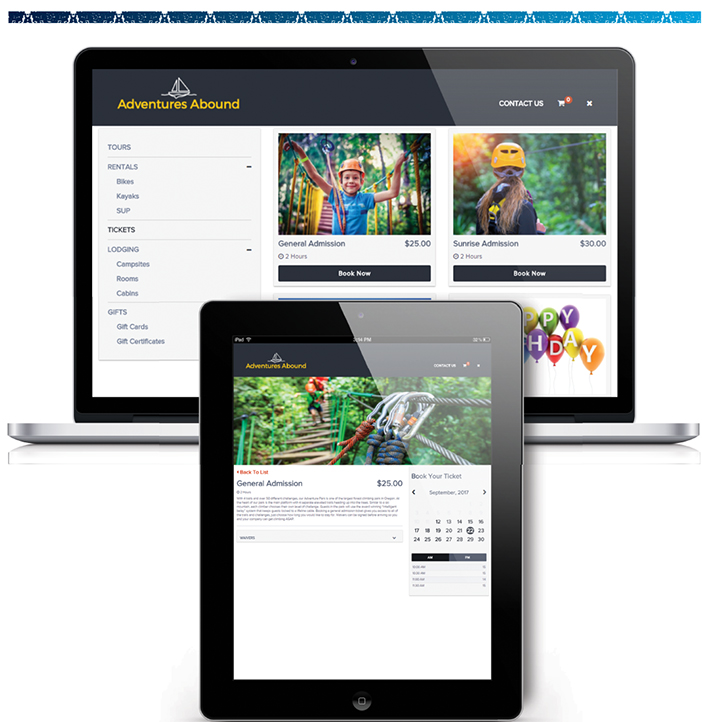
The Flybook’s online booking interface is customizable, allowing operators to position their most premium products first. With major purchase waves in mind, like Black Friday, operators can sell tickets in advance at a discount using Flybook gift certificates.
And if you still aren’t convinced, Xola dug into its statistics vault and shared that, across all its aerial adventure park and zip line customers, approximately 32 percent of bookings are made online. But 46 percent of revenue comes from online booking. Bigger groups plan ahead.
More Features and Testing to Help Direct Sales
The desire to drive more conversions online is leading to the development of new software features.
Ian Maier of Xola says, “Something we’re doing is giving people the ability to remarket through email, through Adwords, and through Facebook. We’re taking a two-pronged approach—we get the email of the customer (who nearly booked, but didn’t), so you can win these people back.” Oskar Bruening of Peek shares similar thoughts: “We’ve seen revenue increases of 10 percent just from email retargeting.”

A long or complex checkout causes frustration and drives customers away before they finish their booking. Xola’s unique checkout design solves this problem by allowing customers to find availability (quantity, date, and time) without having to jump back and forth between pages.
No stone is being left unturned. As Jess Pashos from FareHarbor says, “We’re constantly A/B testing to make sure the form is converting at the highest rate possible.” Following a similar theme, Bruening says that a re-build of Peek’s widget with A/B tests in mind saw an incredible 40 percent increase in bookings.
Compatibility is also on everyone’s radar. Nearly all booking software offers a standard JavaScript code, which works harmoniously with almost any website, but others have taken things a step further. Steven Joyce of Rezgo points out, “Wordpress has become hugely popular, so we’ve made a lot of changes to the plugin to integrate better with WordPress.”
The Flybook is also in the picture. Its data tools allow you, for example, to see which zip codes are responding best to your Facebook campaigns. That allows you to target your advertising to those areas. Upon doing these kinds of analyses, The Flybook noticed that individual ticket buyers are more likely to live closer to parks, while group bookings tend to come from more distant zip codes. “It’s about giving our operators data they can actually use,” says Langer.
Software Modules Specifically Built For Adventure Park Operators
There is a move away from generic solutions to add-ons built to solve specific problems.
“Our smart ticketing platform was created specifically for the adventure park industry,” says Langer. “You now have specially designed adventure park software that sits on top of our core software.”
Xola has taken a slightly different tack. “Xola has focused on building an API [Application Programming Interface] to expand customized functionality, such as our ticketing and check-in kiosks that help manage high volume walk-up traffic, digital waivers, integrations with distribution partners like Expedia and Viator, or your own custom application. There is no limit to what you can do,“ says Maier.
Rezgo’s Joyce believes that the talk of online channels, while important, is only part of the story. “We’ve spent a lot of time working on the offline side of the sale,” he says. “Out of 10 bookings, eight are offline, so we want to help operators capture more of that offline business. If you’re not focusing on the ability to make it easy for the operators and their employees in the offline environment, you’re clearly missing out on that.”
The Business-Model Battle is Heating Up
No topic is hotter in conversations with booking software companies than business model. It’s also high on the list of questions operators have.
Largely, there are three types of software fee models: flat fee (Checkfront, Rezdy, Resmark), commission (FareHarbor, Peek, Rezgo), and flat-fee-per-booking (The Flybook.) Xola offers the choice of either commission or flat fee. The commission-based softwares typically add a booking fee to the final transaction, similar to the Ticketmaster model.
FareHarbor believes strongly in the percentage-based booking fee model. Given the traumatic disappearance of Zerve leading into the July 4 holiday, Pashos emphasizes the importance of having a stable business model. She says FareHarbor’s pricing hasn’t changed since day one. Not only that, “We never take a commission from the operators themselves, to save them money. Because of our pricing, our success is literally tied to the success of the industry.” Bruening of Peek wholeheartedly concurs: “This model gives me an incentive to build a better system.”
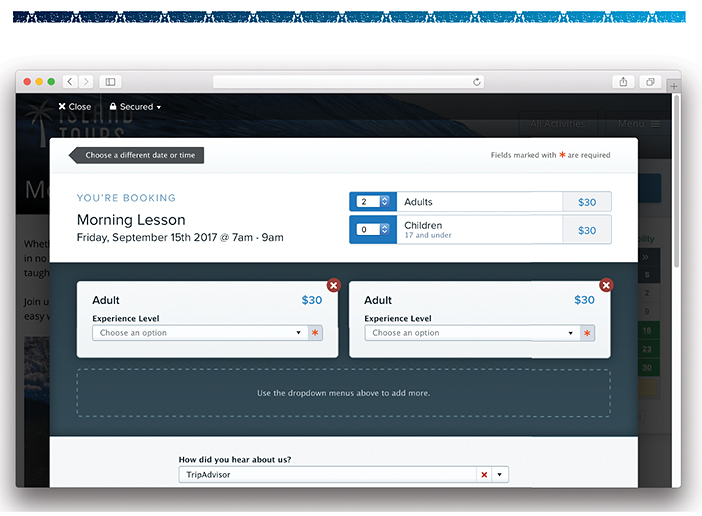
Making the online booking experience fast and user friendly is vital. FareHarbor has designed its consumer-facing booking screen to be clean and easy to navigate.
Maier from Xola sees the pros and the cons of all models, but notes that a hybrid model is an option that more and more operators find appealing. You add the booking fee to your own revenue, pay a monthly fee to your booking software company, and keep the difference (if any). He cautions against too much greed, though: “A six percent fee can add up substantially on big ticket items, and that can be a consideration.”
The level of complexity of your business is also a factor to consider. Chip Broyles of Resmark notes that, “with more complex businesses, such as multi-day tour companies, just building the itinerary is complicated. For $5,000 to $10,000 sales, you have to spend a lot of time nurturing before the booking just to make it happen.”
Connectivity is Winning the Day
The positive of the Expedia and Viator wave is that it has forced booking software companies to create powerful third-party integrations, using those data connections known as APIs. Waiver integrations are now par for the course; just two years ago, very few people were talking about this.
FareHarbor’s Pashos says, “It all comes down to connectivity, being able to control your business, being able to connect through APIs.” For her, Expedia or Viator are step one; FareHarbor’s vision is to connect the entire ecosystem.
Bruening from Peek also points to the marketing potential. As he sees it, “Integration with email software is incredibly powerful. I can reach out to everybody who came in the last nine months and offer them gift certificates or discount codes.”

Mobile device functionality is imperative for both the consumer side and the reporting side. Peek software features a report of the day’s activities (left) so operators can see what’s booked along with other details. Peek’s software also allows consumers to book a tour (right) from the palm of their hand.
But it’s not just about marketing. “The last decision of the operator is ultimately based on how tightly integrated the software is with anything else. Whether it’s email campaigns, or getting financials into Xero, just trying to minimize the administration” is also important, according to Checkfront’s Jurgeneit.
What About The Operators With Lodging, Activities, Rafting, or Additional Products?
What about the operators with more complex businesses? Checkfront, The Flybook, and Resmark all offer a heavy emphasis on integrating multiple facets of a business. Broyles of Resmark proudly points to this additional capability: “Many operators have lots of moving parts and pieces, such as lodging where people may share rooms. The reason ‘simple’ software tools are so easy to set up is because they’ve got operators selling simpler tours. If you’re managing a multi-day operation with different lodging requirements per day, it’s a whole different ballgame,” he says.
Coming In Part 2
So that’s the current landscape. Booking software is evolving fast, and gives you lots of functions that weren’t available even a few years ago. In the Winter 2018 issue of Adventure Park Insider, we’ll highlight new products in the business software space and the key features that each system has been rolling out, to help you make informed decisions for 2018 and beyond. Stay tuned!
Booking Software Suppliers
Checkfront
www.checkfront.comFareharbor
www.fareharbor.comPeek
www.peek.comResmark Systems
www.resmarksystems.comRezdy
www.rezdy.comRezgo
www.rezgo.caTheFlybook
www.theflybook.comTrekkSoft
www.trekksoft.comXOLA
www.xola.com


